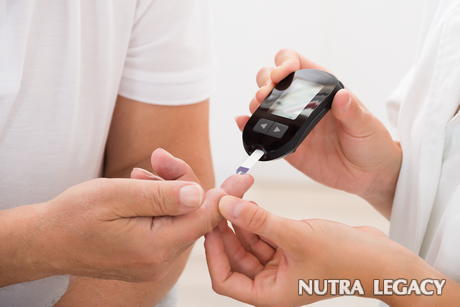Slow Wound Healing Due to Elevated Blood Sugar

- Wound healing is an extremely important process that you can help by various means that this article will discuss
- The way in which you treat wounds is important, especially if you have high blood sugar
- How you treat open wounds is even more important
Over time, elevated blood sugar levels because of diabetes can pose some serious complications to your health. You’ve probably heard about some of these complications, including blindness and higher risks of heart disease. However, one of the most common problems is the increase in time required for wound healing. Unfortunately, this problem, one that may seem so minor, can have long term, major complications.
Why is Wound Healing Reduced Because of Diabetes?
When you have elevated blood sugar, one of the primary problems associated with these levels is that you have a reduced ability to heal properly. There are a number of reasons for this connection. One is poor circulation. When you have elevated blood sugar, fatty deposits can end up building up on artery walls. The extra sugars can end up damaging proteins along the lining of the arteries as well. When the blood can’t circulate efficiently, especially to extremities like the feet, healing is minimized.
Another problem can be nerve damage. Neuropathy is a complication of elevated blood sugar. When this occurs, you may not notice right away when you have an injury. This means that the injury could become more severe and more difficult to heal. This also means that the chances for infection are higher.
Even more importantly is that the immune system simply doesn’t work well in the presence of elevated blood sugar. As a result, wound healing is slower. Infections are also common because of the slowed healing, making the infection harder to get rid of once it develops.
Problems Associated with Slow Wound Healing
If you have a small cut on your arm that seems to heal too slowly, you might not think anything of it. However, elevated blood sugar does not always cause minor complications like this. Let’s say you develop a blister on your foot. For most people, this is not a serious problem. For people with elevated blood sugar levels, however, that blister can continue to worsen without proper healing. If it becomes infected, a person could literally lose a foot if that infection spreads.
In the United Kingdom, one in six people who have diabetes develop foot ulcers because of the combination of nerve damage and slow wound healing. Even if these ulcers do heal eventually, they come back and require frequent medical treatment because of complications with elevated blood sugar levels. About 10 percent of these foot ulcers end up leading to amputations, which means this can be a real risk if you don’t have your diabetes managed well.
Related Complications
Although the increased risk of amputation is greater when you have extremely elevated blood sugar levels, there are other problems you should be concerned about. With reduced wound healing capabilities, you may have problems with surgical procedures. Remember that fast healing is important in surgery. When that ability is compromised as a result of poor diabetic management, you could end up at greater risk for complications and infections following a surgery. That’s definitely not something to take for granted.
The information supplied in this article is not to be considered as medical advice and is for educational purposes only.
|
One Response to “Slow Wound Healing Due to Elevated Blood Sugar” | ||||||||||||||





 24 Nov 2008
24 Nov 2008
My husband is diabetic and he is prone to sores on his legs. No matter what he puts on them, it takes close to a month to heal. You really need to take care of yourself when your diabetic.January 25th, 2009 at 10:35 pm